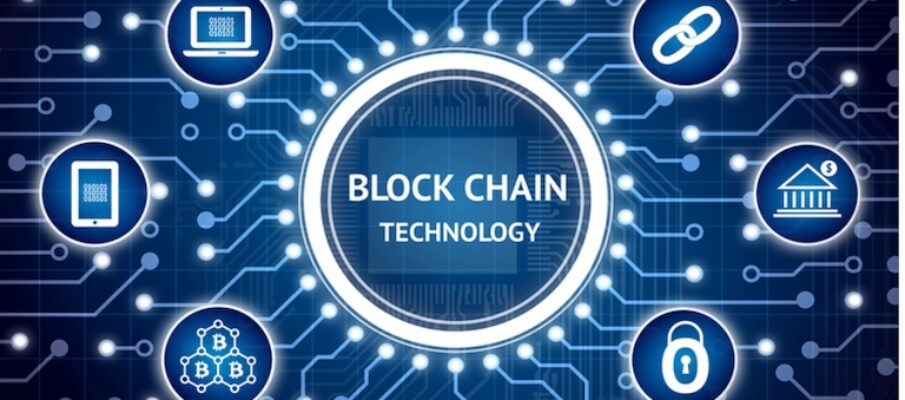Introduction
Blockchain technology, initially developed as the underlying framework for cryptocurrencies like Bitcoin, has now found significant applications across various sectors far beyond its original use. This article delves into how blockchain is revolutionizing industries such as supply chain management, voting systems, and personal identity security. It provides a detailed understanding of the benefits and implementations of blockchain across these fields, showcasing its potential to enhance transparency, increase efficiency, and improve security in digital transactions.
Blockchain in Supply Chain Management
Overview of Blockchain’s Role
The complexity and lack of transparency in modern supply chains can lead to inefficiencies and fraud. Blockchain technology addresses these issues by providing a transparent and immutable ledger, accessible by all parties involved in the supply chain. This section explores the fundamental changes blockchain brings to supply chain management.
Benefits of Blockchain in Supply Chains
- Transparency and Traceability: Blockchain offers unmatched transparency and traceability in supply chains. Every transaction and movement of goods can be recorded on a blockchain, providing real-time visibility and preventing fraud and counterfeiting.
- Efficiency Gains: By automating and streamlining traditional processes with smart contracts, blockchain can significantly reduce delays, human errors, and administrative costs.
- Enhanced Security: The decentralized and immutable nature of blockchain makes it highly resistant to tampering, thus enhancing the security of supply chain data.
Implementation Examples
- IBM and Maersk: Together, they have developed TradeLens, a blockchain-enabled shipping solution that enhances the efficiency of global trade.
- De Beers: The diamond giant uses blockchain to ensure conflict-free diamond tracking from the mine to the retailer.
Blockchain for Secure Voting Systems
Potential for Revolutionizing Voting
Blockchain can dramatically transform the voting system by making it more secure, transparent, and accessible. This segment discusses how blockchain can rebuild public trust in electoral processes.
Advantages of Blockchain in Voting
- Increased Security: Blockchain’s structure allows for the creation of secure voting systems that are nearly impossible to hack.
- Greater Transparency: All votes recorded on a blockchain can be seen by authorized entities but cannot be changed, ensuring fair counting and verification.
- Accessibility and Convenience: With blockchain, remote voting becomes more feasible, potentially increasing voter turnout as people can securely cast their votes from anywhere.
Case Studies
- Sierra Leone’s 2018 Presidential Election: The country experimented with blockchain to tally and verify election results, enhancing transparency and trust.
- Estonia: A pioneer in digital governance, Estonia uses blockchain technology to secure its electronic voting systems.
Blockchain’s Role in Personal Identity Security
Addressing Identity Security Challenges
Identity theft is a growing concern, with millions affected annually. Blockchain provides a promising solution by enabling more secure and tamper-proof methods of recording and verifying identities.
How Blockchain Improves Identity Security
- Decentralized Identity Management: Users can control their identity and personal data without relying on traditional centralized entities.
- Enhanced Privacy and Security: Blockchain’s encryption and decentralization offer a higher level of security and privacy for personal data.
- Fraud Reduction: The immutable nature of blockchain records helps prevent fraud and unauthorized data access.
Notable Implementations
- Microsoft’s Decentralized Identity Initiative: An example of how blockchain can be used to give individuals greater control over their digital identities.
- Zug, Switzerland: This city offers blockchain-based digital identity registration to its residents, simplifying access to public services.
Future Prospects and Challenges
As blockchain technology continues to mature, its applications are expected to broaden. This section explores the potential future innovations and the existing barriers to its widespread adoption.
Innovations and Trends
- Integration with IoT and AI: Blockchain could further enhance IoT security and AI decision-making processes.
- Advancements in Blockchain Infrastructure: Such as sharding and Layer 2 solutions, which are expected to solve current scalability issues.
Challenges to Overcome
- Scalability: The high energy consumption and slow transaction speeds of current blockchain solutions need to be addressed.
- Regulatory Issues: Legal and regulatory frameworks around blockchain are still underdeveloped and could pose challenges to its adoption.
Conclusion
Blockchain technology offers transformative potential beyond cryptocurrencies, impacting a wide range of industries by providing solutions that promise greater transparency, enhanced security, and increased efficiency. As the technology evolves, it will likely become a standard component of modern digital infrastructures, paving the way for more innovative and secure business practices globally. The ongoing development and integration of blockchain into various sectors signal a robust future for this technology, heralding a new era of digital transformation that transcends its original financial applications.
